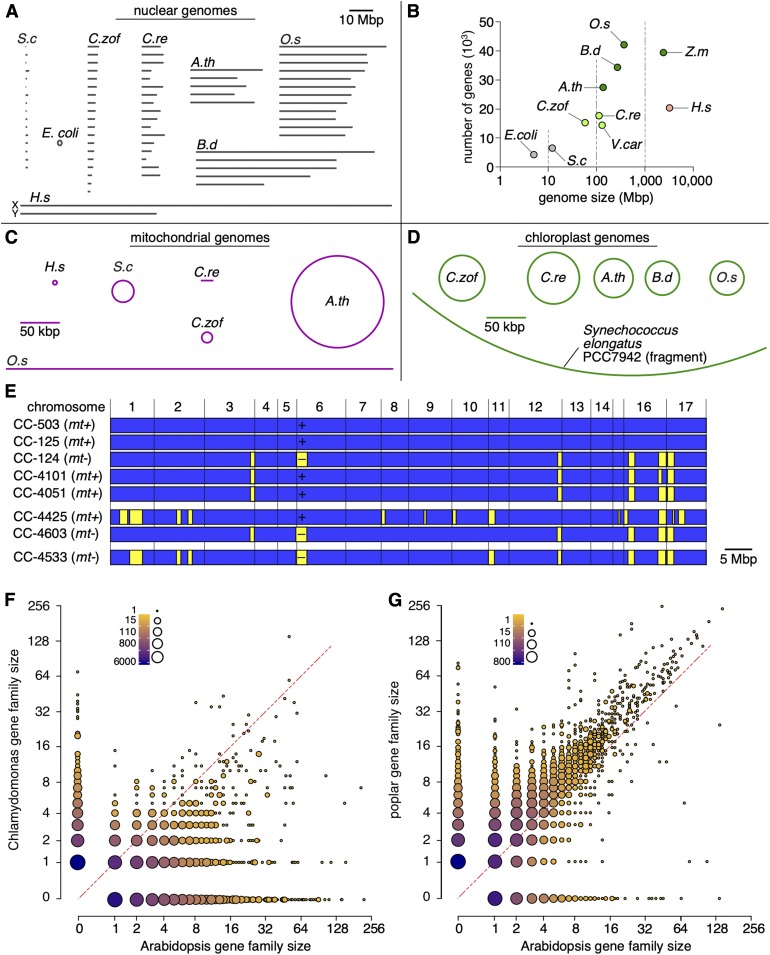Figure 5.
Genome Sizes and Chromosome Numbers in Bacteria, Green Algae, Plants, Yeast, and Humans.
(A) Nuclear genomes. All chromosomes were drawn to scale and ordered by their assigned number. Chromosomes in C. zofingiensis were sorted by length (Roth et al., 2017). The human X and Y chromosomes were drawn for reference.
(B) Genome size versus gene space, showing the number of predicted protein-coding loci as a function of nuclear genome size.
(C) The mitochondrial genome is a linear molecule (with inverted repeats at each end for replication) in C. reinhardtii, C. zofingiensis, and rice.
(D) The plastid genome is a circular molecule in green algae and plants. A portion of the single chromosome from Synechococcus elongatus PCC7942 is shown as a reference for the genome size of the cyanobacterium ancestor that gave rise to modern-day chloroplasts. A.th, Arabidopsis thaliana; B.d, Brachypodium distachyon; C.re, Chlamydomonas reinhardtii; C.zof, Chromochloris zofingiensis; H.s, Homo sapiens; O.s, Oryza sativa; S.c, Saccharomyces cerevisiae; V.car, Volvox carteri; Z.m, Zea mays.
(E) Similarities among the genomes of selected strains, represented within the context of the full genome. Haplotype 1 blocks are shown in blue, and haplotype 2 blocks are shown in yellow.
(F) and (G) Comparison of gene family sizes between Arabidopsis and Chlamydomonas (F) and poplar (G). The number of genes associated with each gene family was extracted from Guo (2013).

